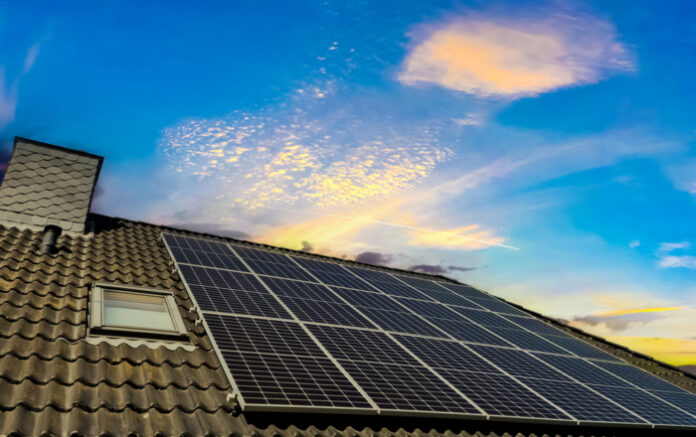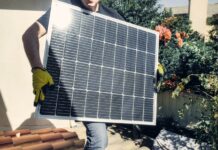Transforming your old house into an energy-efficient powerhouse? Installing solar panels represents more than a move towards sustainability. It symbolizes a significant leap into modernity. It also showcases your independence from the conventional energy grid.
By harnessing the sun’s power, you not only reduce your carbon footprint. It also paves the way for a more eco-conscious lifestyle. The step-by-step guide below will walk you through each stage! Transition your small old house into a green energy haven using solar power. Let’s dig deeper!
Assess Your Energy Needs
Have a comprehensive understanding of your home’s energy consumption patterns. Take the time to analyze your past electricity bills. This is to discern the average amount of power consumed over a given period.
This meticulous review will serve as a valuable foundation. This is for gauging the appropriate size and quantity of solar panels required. This is to meet your energy needs. With this, you can then start planning for the installation process.
Check Your Home’s Solar Potential
Not every home is situated for renewable energy generation. Factors like the orientation of your property and the amount of sunlight it receives are crucial. This helps in determining its solar potential. There are many online tools and services available that can provide detailed assessments.
This is without requiring you to climb onto the roof. By utilizing these resources, homeowners can make informed decisions. This is about harnessing solar power for their properties. It contributes to a more sustainable and eco-friendly future.
Understanding your energy needs is the first step. This is towards harnessing the power of solar energy. But it’s important to check your home’s solar potential.
Not all homes are created equal when it comes to utilizing solar energy. Factors such as orientation and amount of sunlight play a crucial role. This is in determining whether your home is suitable for these types of solar panels.
There are many online tools and services available. It can provide detailed assessments of your property’s solar potential. This is without requiring you to climb onto the roof.
Understand Local Regulations and Incentives
Different locations across the country have diverse regulations governing solar panel installations. It is crucial to stay well-informed about:
- specific building codes
- zoning laws
- any potential restrictions
This might be imposed by Homeowners’ Associations (HOAs). Apart from these, delving into the available federal, state, and local incentives is advisable. This is because they can lower the initial installation costs. This makes the switch to solar energy more cost-effective in the long run.
Choose the Right Solar Panel System
Solar panels come in a variety of types and efficiencies, each offering unique advantages based on your specific needs. Considering the limited space available in a small, old house, opting for higher-efficiency panels can be advantageous in maximizing energy production.
While these panels may come at a slightly higher cost, their long-term benefits in terms of energy savings and environmental impact make them a wise investment for sustainable energy solutions.
Find a Reputable Solar Installer
Given the intricate structural nuances often found in older homes, opting for a skilled installer well-versed in handling such properties becomes paramount. Their expertise extends beyond mere installation. This is because they offer invaluable insights. This is about optimal setups tailored for historic structures.
With a deep understanding of the unique challenges posed by aged buildings, these experienced professionals can adeptly navigate any complexities. All these may arise during the installation process.
Make sure to check out Chicago’s premier solar panel provider. Their team of experts specializes in installing solar panels on historic homes, ensuring a seamless integration while preserving the integrity of the property.
Conduct a Home Energy Audit
Before the installation process, conducting a comprehensive home energy audit is highly recommended. Such an audit can effectively pinpoint specific areas within the home. These are areas contributing to energy loss. This highlights opportunities for efficiency enhancements.
By undertaking this crucial step, homeowners can gain valuable insights. This may influence the size requirements of a solar panel system. This leads to a more informed and optimized decision-making process.
Secure Necessary Permits and Documentation
Your installer is a valuable resource who can frequently assist with this crucial step. It is imperative to verify that all required permits are obtained before commencing the installation process, ensuring strict adherence to the specific regulations within your local area.
Failure to obtain necessary permits can result in costly fines and delays. Your installer should also provide you with all the necessary documentation and warranty information for your solar panel system.
This includes but is not limited to:
- Manufacturer’s warranties
- Detailed installation instructions
- Maintenance and troubleshooting guidelines
Having these documents readily available will not only ensure that you have a complete understanding of your solar panel system. But it will also come in handy in case any issues arise in the future.
Installation of the Solar Panel System
Installation usually takes a few days, varying based on the size of the system. The process encompasses tasks such as:
- mounting the solar panels
- installing the inverter
- connecting the system to the grid
This is if you’re choosing an off-grid living setup. This comprehensive approach ensures that the solar system is set up efficiently and effectively.
Inspection and Connection
Post-installation, an inspection conducted by a local government representative is carried out meticulously to ensure that the installation adheres to all the pertinent codes and regulations in place. Once the inspection garners approval, the system is then officially connected to the local utility grid for seamless integration and operation.
Monitor and Maintain Your Solar Panel System
It is crucial to prioritize monitoring your system. This practice plays a vital role in guaranteeing that the system functions at its optimal efficiency levels. Conducting regular maintenance checks is essential. This is because they serve the dual purpose of preventing potential issues from arising.
Empowering Your Small Old House with a Solar Panel System
Implementing a solar panel system in an old, small house might seem daunting. But, with the right approach, it’s entirely achievable. Each step brings you closer to a sustainable, energy-efficient home. This does not only reduce your carbon footprint. It also reduces your electricity bills in the long run.
Remember, transitioning to solar is not just an investment in your home. But, also in the planet’s future. So, don’t wait any longer! Follow these essential tips to empower your small old house with a solar panel system.
Find a Home-Based Business to Start-Up >>> Hundreds of Business Listings.

















































